Jenkins Estate is at near the Gate House.
Master Gardener workday:
Thursday 10:00am to 1:00pm.
We invite the public to visit, explore and learn!
- Open to the public. Visit during Jenkins Estate open hours.
- Educational signage throughout the garden.
- Free seminars open to the public can be found on the 2025 WCMGA Calendar of Public Events
- Guided tours for groups are welcome with suggested times on Thursdays between 10:00am-1:00pm. If you are interested in scheduling a tour, contact Sandy Japely at sjapely@gmail.com.
The WCMGA Learning Garden
offers hands-on opportunities to explore a wide range of sustainable gardening practices through Garden Themes. Educational signage is located throughout the garden. Visit, Explore, Learn ! Let’s walk our way through the interesting garden themes that are featured in the Learning Garden at Jenkins Estate.
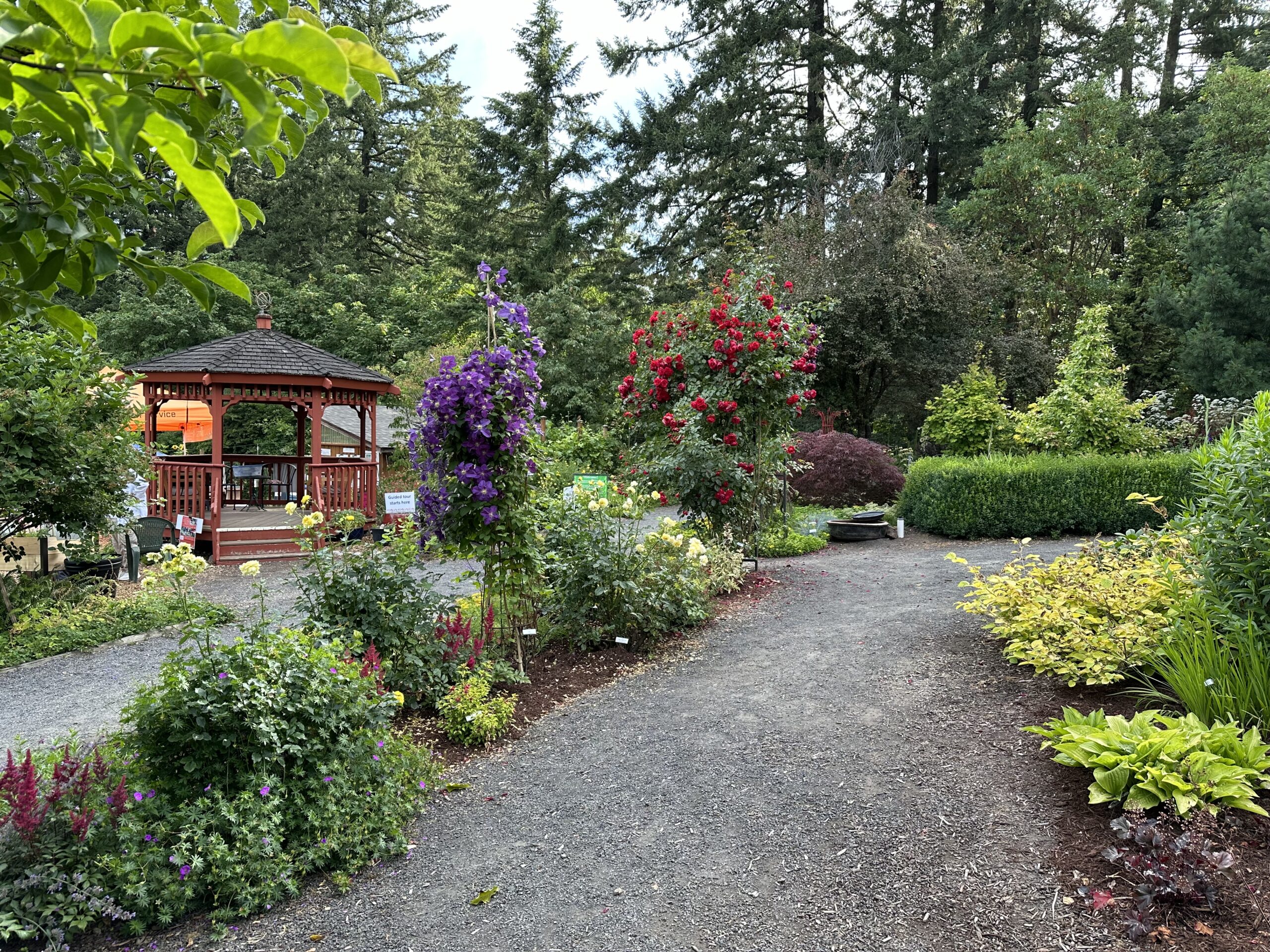
The Pollinator Garden
The Pollinator Garden is designed with trees, shrubs and flowers that provide pollen and nectar sources from early spring through fall. Nesting stations for our native mason bees are located here and throughout the garden. Flowers are planted in extra large clumps to help attract the pollinators.
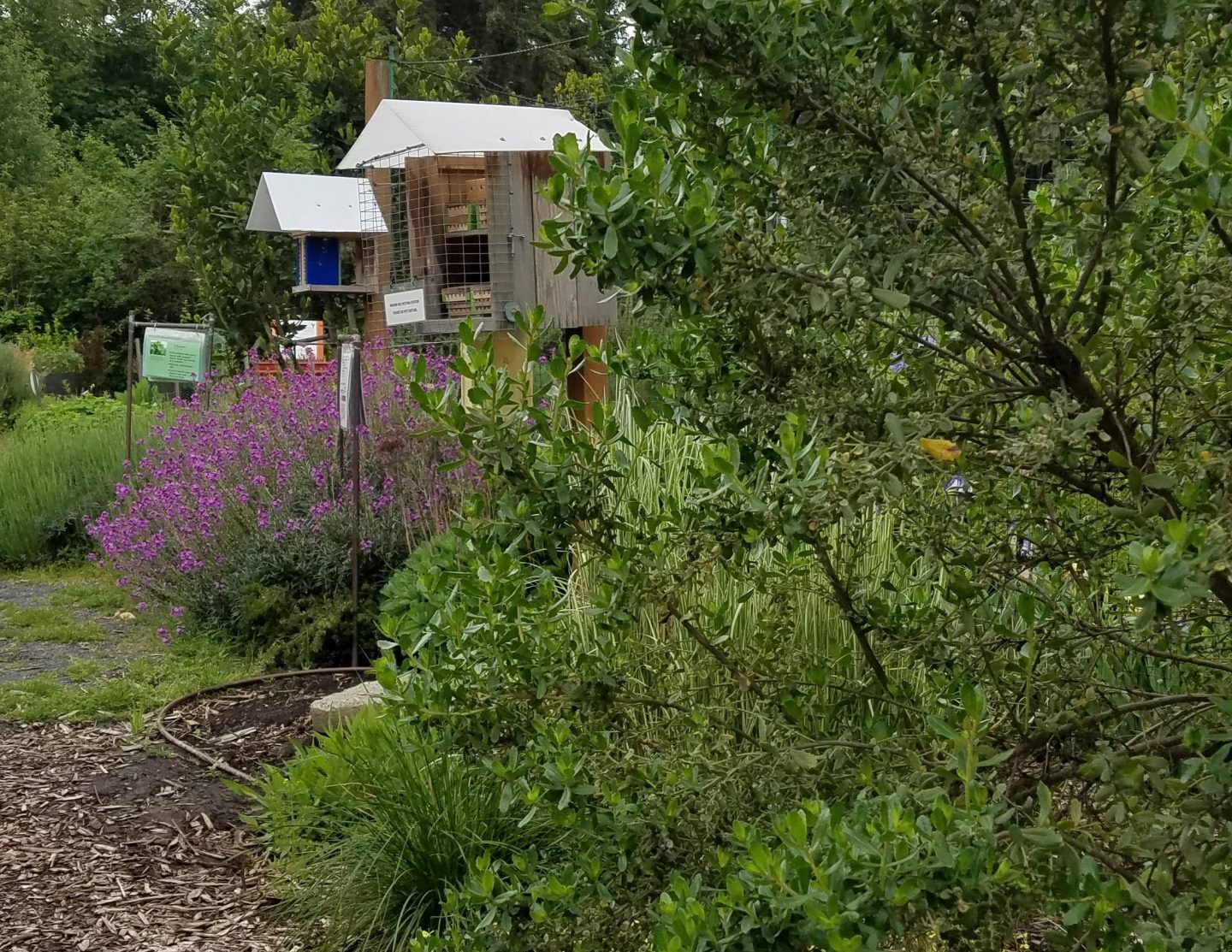
Waterwise and Dry Garden
The Waterwise and Dry Garden will appeal to anyone who wants a low-maintenance and ecologically-sound, low-water use garden. This garden was developed to showcase plants that thrive in a Mediterranean style climate (and our Pacific NW climate) – mild, wet winters and warm, dry summers. Though the garden ultimately is low maintenance, it does require careful assessment of soil, drainage, light and moisture. Use of gravel mulch is featured in this garden. Look here for: Additional resources for waterwise landscaping.

The Vegetable Garden
The busiest section of the garden is the Vegetable Garden with soil care, planting, pruning, harvesting and weeding. The Raised Bed area features multiple ideas for constructing raised beds from a variety of materials including wood, plastic kits, and cement blocks. Trugs, a lasagna bed, keyhole beds, portable bags as well as a cloche covered bed add to the mix of vegetable gardening methods. Vertical plantings include various trellis and cattle fence panels adding to the examples of gardening options. In-ground crops are also featured. Plants and beds are chosen to be something that the home gardener can readily do. Throughout the growing season, produce from this garden is donated to the Oregon Food Bank.
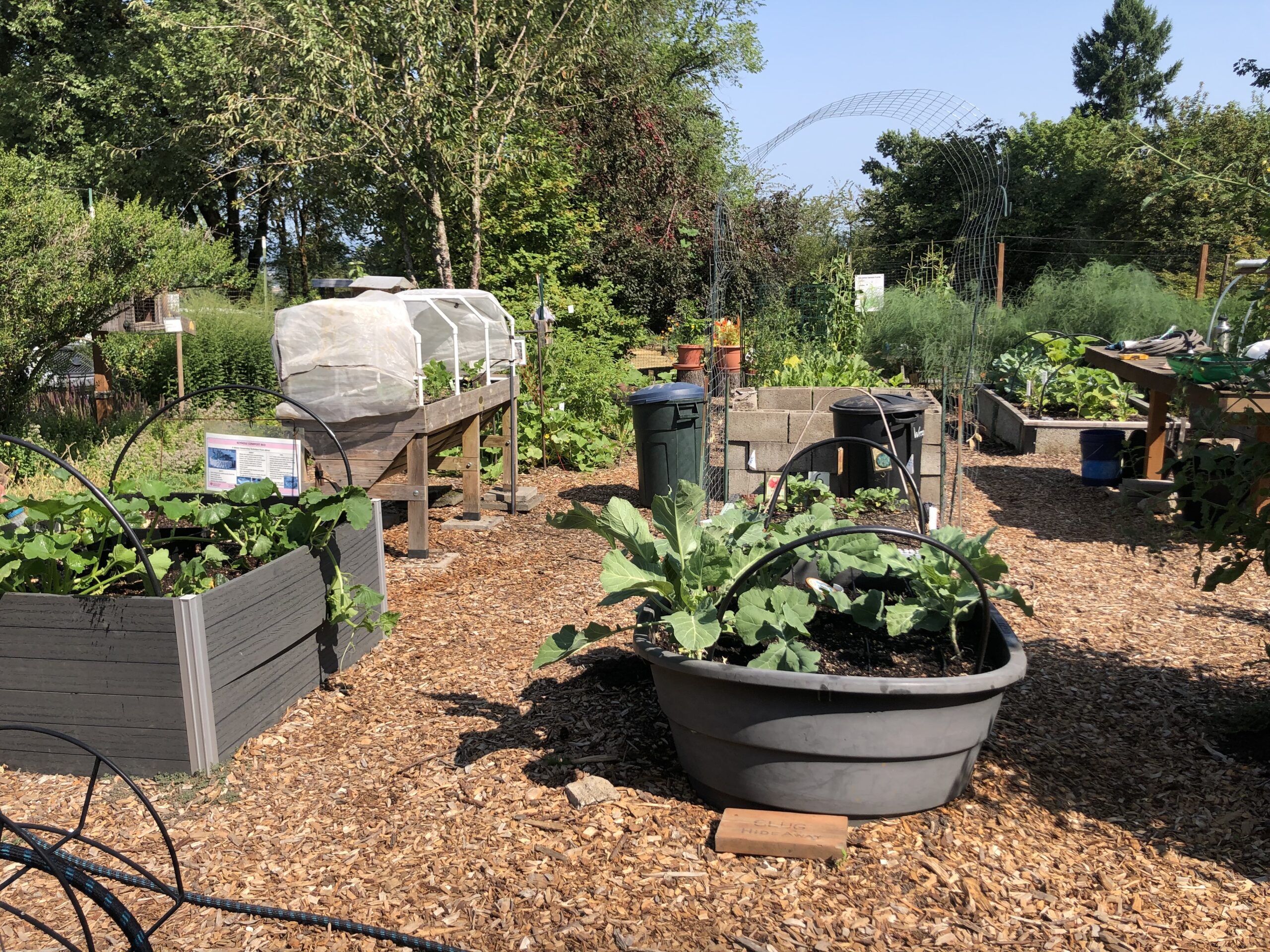
The Small Fruits Garden
The Small Fruits Garden includes a collection of fruits that do well in our area and take a small amount of space. Included are apple trees on dwarf root stock, honeyberry, goumi berry, goji berry and guava. This garden section is bordered by two olive trees donated by Red Ridge Farms in 2014.

The Native Plants Garden
The Native Plants Garden features a log-bordered trail, a dry creek bed, small conifers and many beautiful flowering plants that help illustrate to home gardeners uses of native plants in the landscape. This garden includes many of the plants Lewis and Clark came across during their voyage of discovery in the early 1800s and provides some interesting history for children and adults.

The Spiral Herb Garden
The Spiral Herb Garden contains over 40 herbs that grow well in the Northwest and can be used to enhance a landscape by sight, fragrance and, most importantly, add flavor and color to our favorite dishes, making them “sing”. The path spirals around narrow beds, enabling you to see ‘up close’ the mix of perennial and annual herbs. Herbs with a variety of uses – culinary, medicinal, insect repellant, fragrant, pollinator attractant – can all be found here.

The Companion Planting Garden
The Companion Planting Garden showcases perennials in complementary combinations. The original topography of the area was relatively flat with full sun. A 4-foot high berm showcases plants at different levels and creates shade on the north side. With varying light conditions, this garden supports both shade-loving and sun-loving plants. A Japanese maple serves as the anchor for this year-round interest garden.
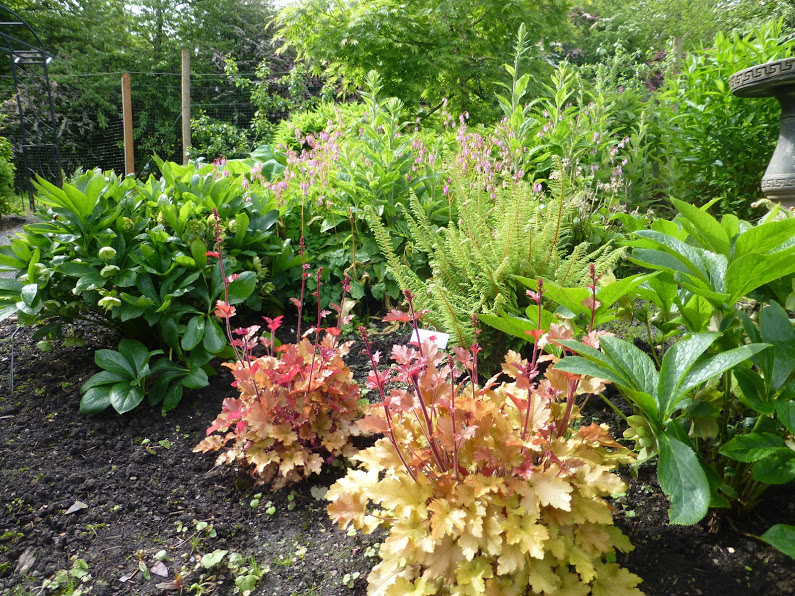
Espaliered Fruit Trees
Espaliered Fruit Trees plantings of apple and pear trees are along the south edge of the Companion Planting area. Espalier roughly translated is French for ‘resting on the shoulder. This space saving technique for growing trees, takes about 4 years to properly shape an espaliered fruit tree, and ongoing pruning to maintain it. It can be the answer to the gardener who wants to grow fruit, but has a small garden or who appreciates this interesting method to grow fruit.
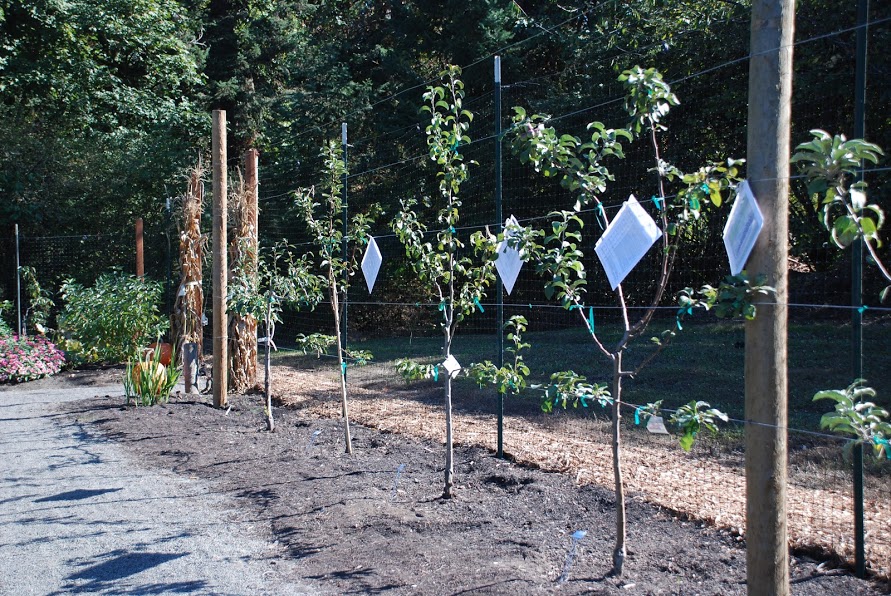
The Urban Edibles Garden
The Urban Edibles Garden features a blend of ornamental and edible plants selected to fit into small residential spaces and provide year-round interest. Evergreen conifers, small trees, shrubs and grasses were selected for their narrow width and compact height to fit in this long, narrow area. Columnar apples, herbs, blueberry bushes, currants, gooseberry and grapes function as perennial plants. Annual vegetables add to the list of edibles incorporated in this garden, helping to demonstrate how they can be interplanted with landscape plants for the gardener who wants to have it all.

Pioneer Herb Garden
The renovated Jenkins Estate Pioneer Herb Garden features four herb beds: Historical Remedies (medicinal remedies of the past), Fragrance, (see photograph), Culinary, and Craft (household and industrial uses). Plantings employ herbs typically grown in the early 1900’s. Like an old English garden, you will discover Heirloom roses, flowering red and white currant bushes, which are hummingbird attractors, and aromatic lavender. Benches offer visitors a chance to sit and take in the sights and aromas of this garden of the past. Grown free of herbicides and pesticides, visitors might just want to touch, taste and smell Lemon Balm and Golden Pineapple Sage. Signage provides more insight into this amazing glimpse into the past.

Deer Resistant Garden
Located just outside the fenced garden, the Deer Resistant Garden displays the use of a range of “deer resistant” plants. Some plants are tried and true, some depend on local tastes and drought conditions. A stressed deer will eat anything. It’s a constant give and take, but this garden will help gardeners become familiar with several plants that can be used in the home landscape featuring year-round interest.
Little Free Library
Visitors are invited to borrow a book from the Little Free Library located in the Deer Resistant Garden. Books are housed in a weather resistant cupboard for use and return when completed. Or, use the nearby bench to relax and read a few pages.
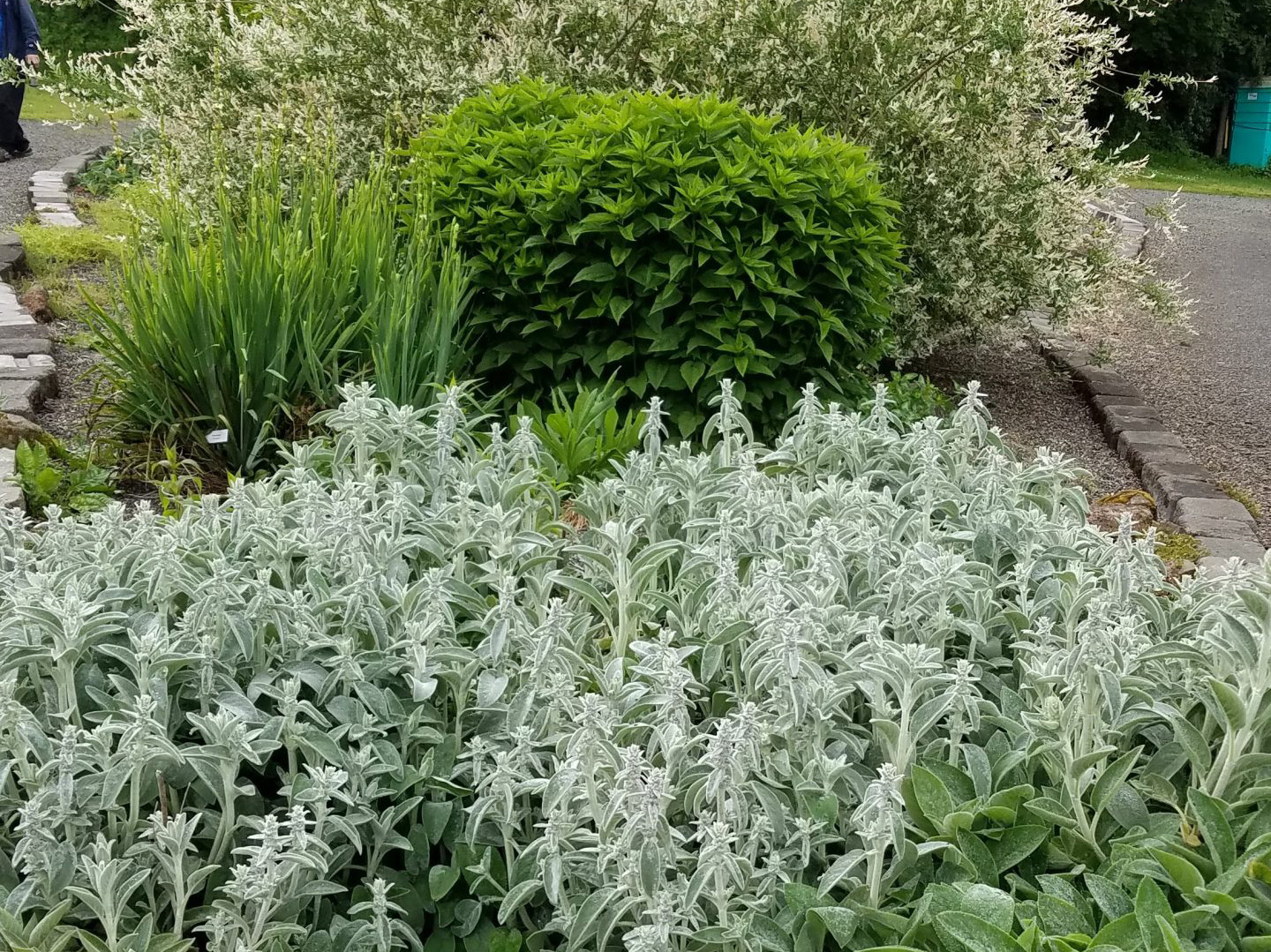
Our Thanks to our supporters:
Watch this video for the story of how the beautiful new gate for the WCMGA Learning Garden was created.
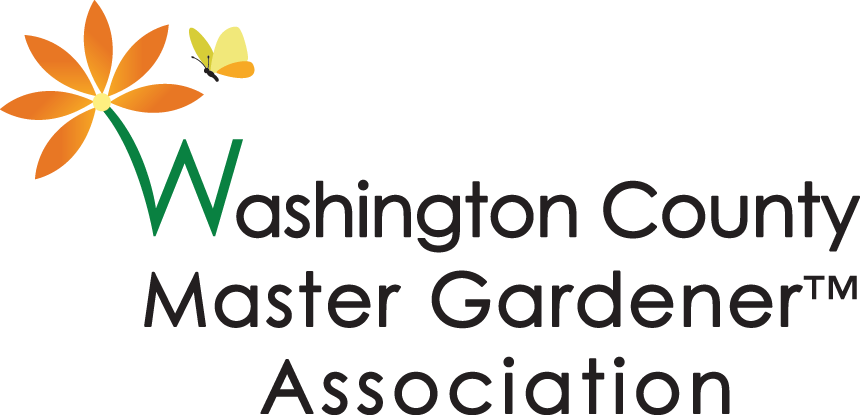
 In cooperation with the OSU Extension Service, the Washington County Master Gardener Association (WCMGA) provides relevant, research-based education and outreach to the public about horticulture and household pests. This information promotes sustainable practices that minimize risks to human health and the environment. The Washington County Master Gardener Association (WCMGA) sponsors a wide variety of gardening–related demonstrations, lectures, seminars and workshops in various Washington County Oregon locations. Most of our events are free and open to the public. The WCMGA is a 501c3 non-profit supported by hundreds of volunteers, who work to educate the public about sustainable, affordable gardening.
In cooperation with the OSU Extension Service, the Washington County Master Gardener Association (WCMGA) provides relevant, research-based education and outreach to the public about horticulture and household pests. This information promotes sustainable practices that minimize risks to human health and the environment. The Washington County Master Gardener Association (WCMGA) sponsors a wide variety of gardening–related demonstrations, lectures, seminars and workshops in various Washington County Oregon locations. Most of our events are free and open to the public. The WCMGA is a 501c3 non-profit supported by hundreds of volunteers, who work to educate the public about sustainable, affordable gardening.